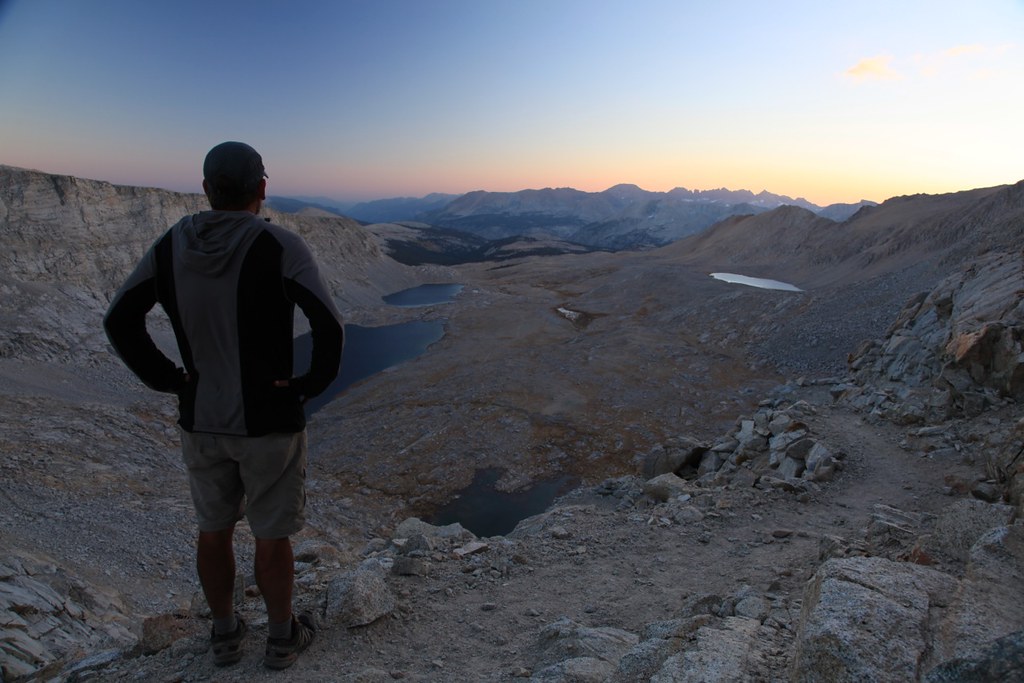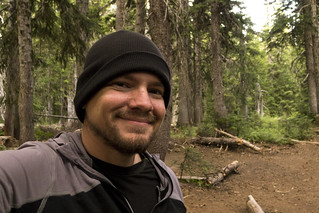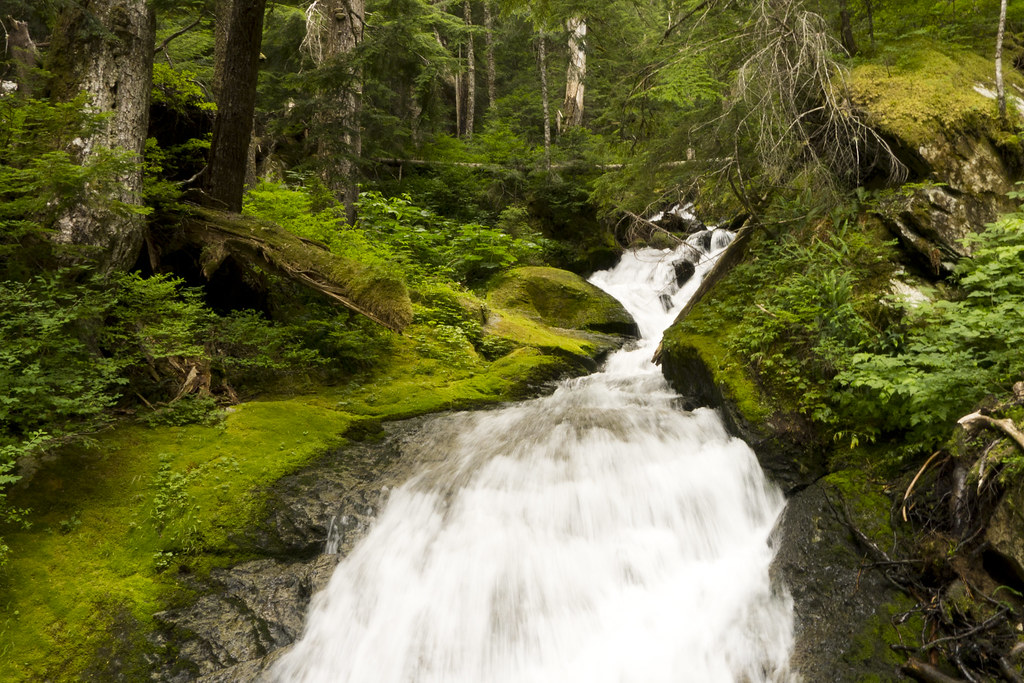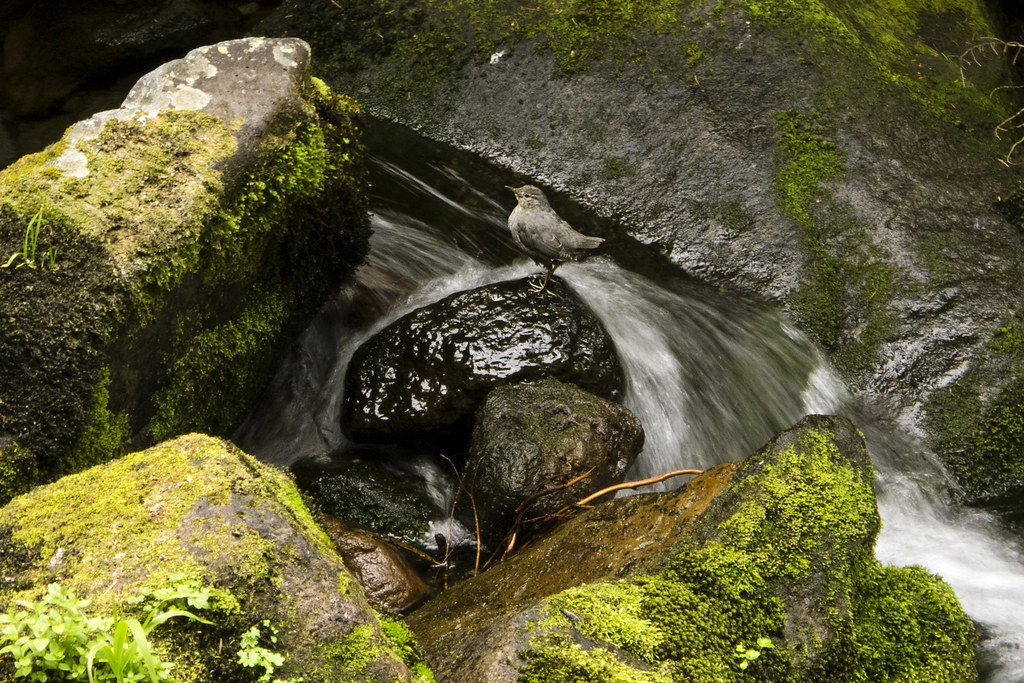- - -
As many of you know, this blog has primarily been a place to share stories and photos from
my trips, but my next trip won’t be for at least a couple months. So until that time comes, my blog will be more of a practical guide to backpacking. Or with the direction my life has taken, a practical guide for the deliberately homeless.Either way, I've learned a lot from my experiences and I love to chat about this stuff. I get a lot of questions and could spend hours answering them, as many unfortunate people have realized after asking me a seemingly simple question.
Many of the questions I get involve obtaining safe drinking water in the backcountry. When I tell people I use common household bleach, they often look at me like I have a death wish. So that's where I'll start.
Few things are as refreshing as drinking all-natural water straight from a cold mountain stream, untainted by chemical treatments. Or to just plunge your face into a spring on a hot day and quench your thirst without fussing around with filters, pumps, and hoses.
If you are smart about choosing your water source, you could go for days, weeks, or even years without treating your water and never get sick. It's a gamble, but after spending a few days stepping over moose poop, or seeing a bloated dead animal floating in a water source, or worse yet, having to witness your friend doubled over with stomach pains and running off into the trees to decorate that beautiful foliage in vomit or explosive diarrhea... I'm getting a bit off the rails here... what I'm trying to say is, that stuff kind of diminishes the "all-natural" romanticism of drinking from a cold mountain stream. So, I treat my water.
Everyone has their own preferred method, but here’s what I do:
My Water Treatment Method:
My method for treating drinking water in the backcountry is a combination of household bleach (one drop per 16 oz.) and/or an inline or straw filter. And don't forget the often skipped step of cleaning your hands after touching potentially contaminated water. I carry a small bottle of hand sanitizer for this. Not doing so could negate everything you do to treat your water.
First, I should say that nothing is more effective as boiling to treat water in the backcountry. Boiling water vigorously for 60 seconds, or three minutes at altitudes higher than 6,500 feet, will kill everything. No other safe chemical or filtration method can claim that. If you're already boiling water for cooking, it's great. For drinking water, however, it is perhaps the most impractical method... read more >
.
Why I use bleach:
1. It's safe... read more >How I use bleach:
2. It's effective... read more >
3. It's cheap... read more >
4. It's easy to find... read more >
5. It's lightweight... read more >
My method is based on recommendations by the Centers for Disease Control, the American Red Cross, and hours of additional reading. If you find any mistakes or have questions or suggestions, please contact me at grayson.ryan@gmail.com. I will always be happy to learn something new and will update this information accordingly.
 1. Fill an eyedropper with bleach. 1. Fill an eyedropper with bleach.Before heading out, I fill an eyedropper bottle with common household bleach. I use an old Visine bottle or breath drops bottle. Since bleach will degrade in direct UV light and become less effective, consider covering the bottle in duct tape, or paint, or something. To fill the bottle without spilling bleach, I often use a ZipLoc bag as a funnel. Put the desired amount of bleach in the bag. Hold it by one of the top corners, so one of the bottom corners is above the bleach. Cut a tiny bit of the corners off, then tip the bag and pour the thin stream of bleach into the dropper bottle. I keep the bottle in a ZipLoc freezer bag or in an empty wide-mouth Gatorade or Powerade bottle to prevent damage to gear and clothes. So far, I have not had a problem. Also, keep in mind, the decomposition rate of bleach increases by a factor of 3.5 for every 18° F increase in temperature, so if not stored at 60-80 degrees, it's probably a good idea to dump it out and replace it after a couple weeks to be safe. |
|
 2. Fill your
water bottle with water. 2. Fill your
water bottle with water.The best water source is actually the top few inches of lake water. The longer time under the sun’s UV rays does a lot of the sterilization for you. Otherwise, a spring or swift moving creek will be fine. If the water source is not clear, I tie a bandanna around the top of my bottle when filling. If your water is still cloudy, let it sit until all sediment has settled, then pour the clear water into another bottle before treating. Chemical treatments are much less effective if the water is not clear or contains free-floating organic material. Organisms that are clinging to free-floating particles are harder to kill. |
|
 3. Add one drop of bleach per 16 oz. of
clear water. 3. Add one drop of bleach per 16 oz. of
clear water.Use two drops if the water is really cold, cloudy, or discolored. If your bleach is not the common 4-6% solution of sodium hydrochlorite you may have to use more or less. The amount of sodium hypochlorite added to bleach may depend on the season. More may be added in the summer to compensate for the higher temperatures. It could be as high as 10%, so check your bleach bottle’s label and adjust dosage accordingly. |
|
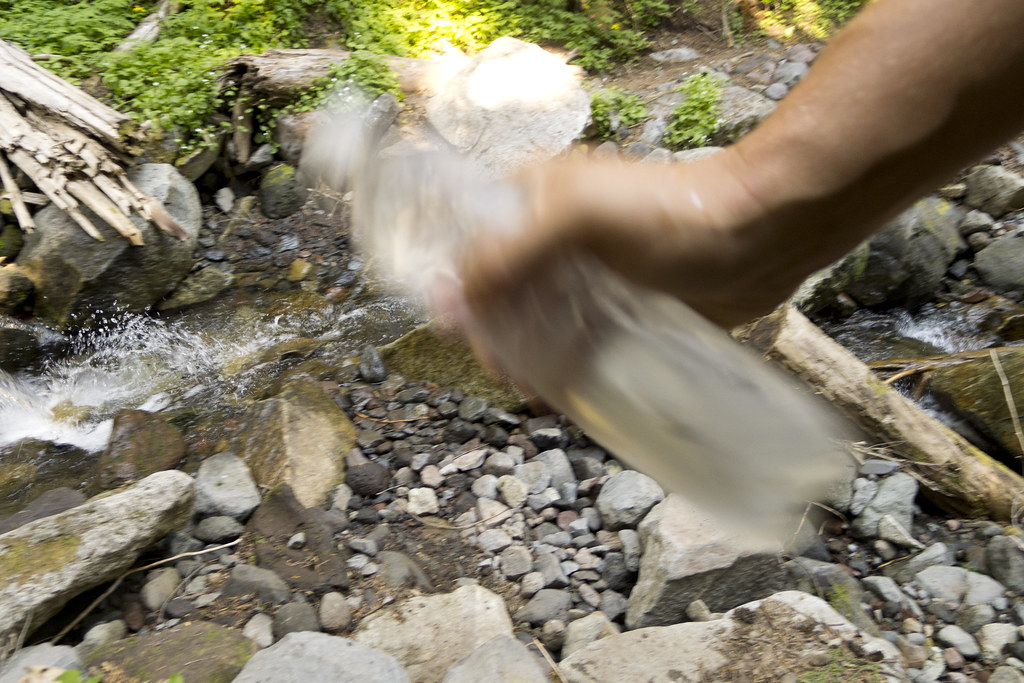 4. Shake it like a Polaroid. 4. Shake it like a Polaroid. |
|
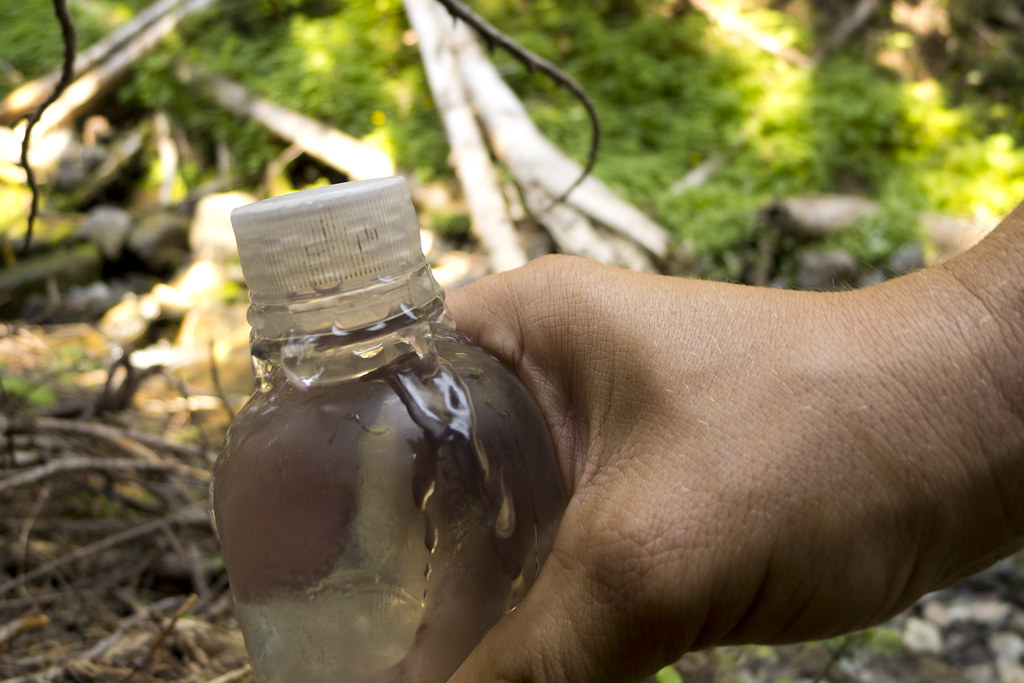 5. Screw the cap nearly all the way on, then
squeeze the bottle until it starts to pour out, and then tighten the lid. 5. Screw the cap nearly all the way on, then
squeeze the bottle until it starts to pour out, and then tighten the lid.
This ensures that the entire bottle, including the cap and threads, get disinfected. |
|
| 6. Wait 30 minutes. And in the meantime, clean your hands with a hand sanitizer. Not cleaning your hands after touching a contaminated water source could negate everything you have done to prevent a water-borne illness. If after 30 minutes, your water does not have a slight chlorine smell similar to municipal tap water, repeat steps 3 through 5. Think of bleach as an army of soldiers you're sending into battle. They kill organisms, but die in the process. The more organisms there are to kill, the more soldiers you need. That's why it may be necessary to treat a second time. And why sometimes you'll smell or taste more chlorine than other times. Keep in mind though, this isn't the fault of bleach alone. It's true for any chemical treatment. |
More water related information:
Why I don't use Sterilizing Pens... read more >
How much water to carry... read more >
Using Filters To Treat Water in the Backcountry... read more >
Why I use plastic soda or water bottles... read more >
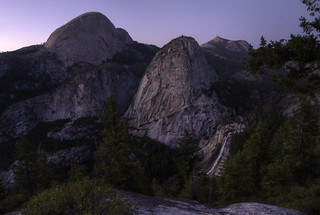
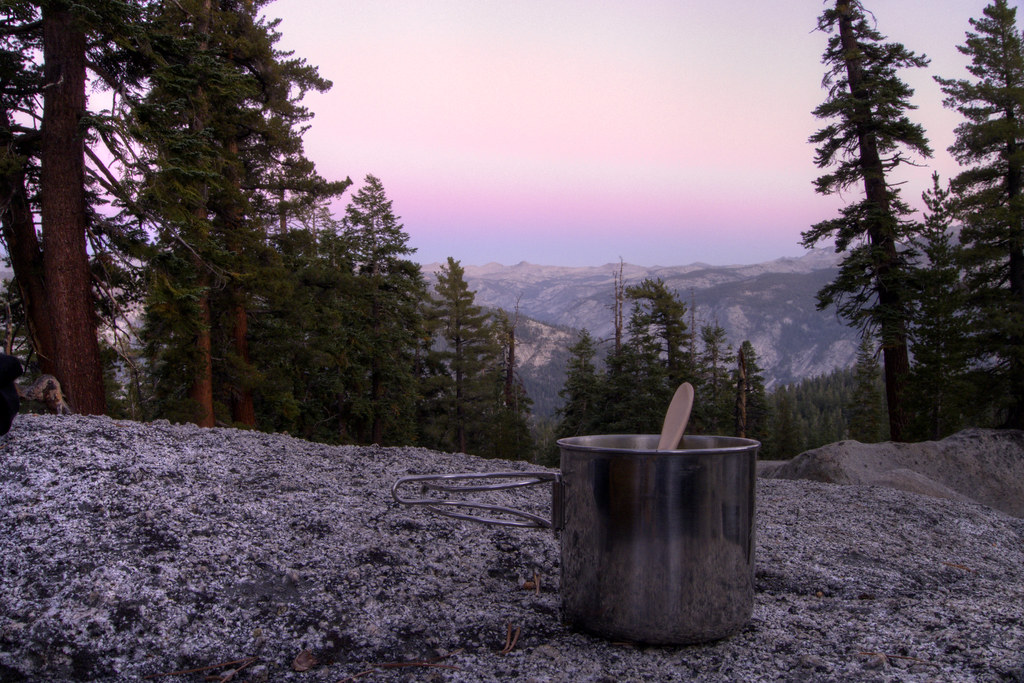
com-s.jpg)
com-s.jpg)
com-s.jpg)
com-s.jpg)
